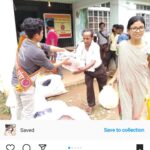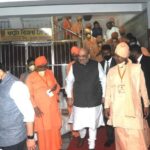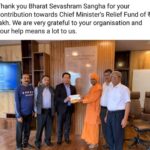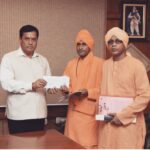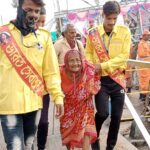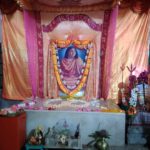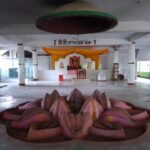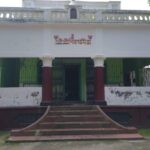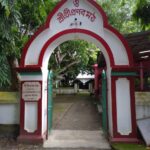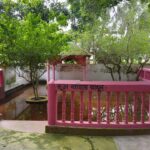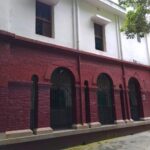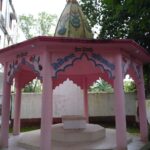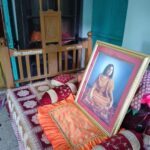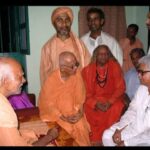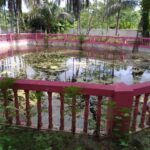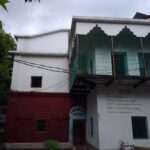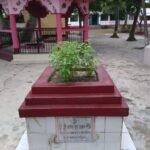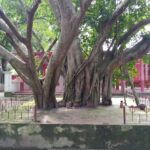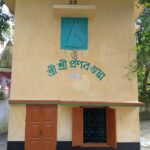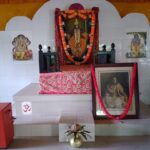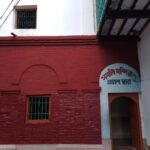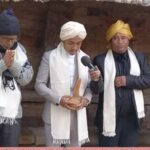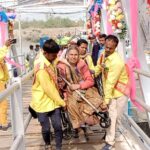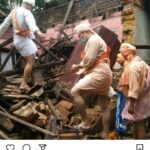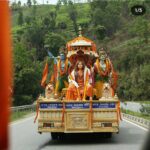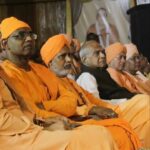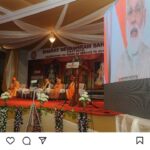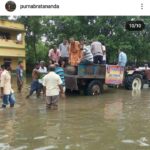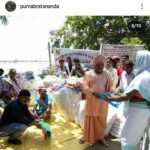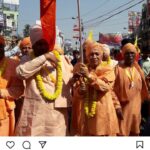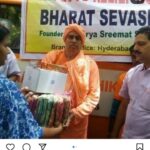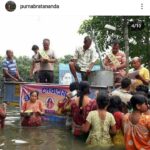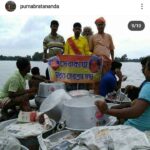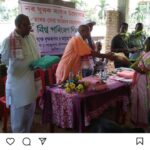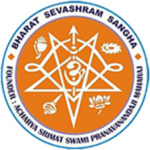
Bharat Sevashram Shillong
(1917-2016)
Commemorating 100 years of Service to Humanity

About us
In February 1917, on the auspicious Maghi Purnima day, in a gathering of selfless workers and Brahmacharins, the epithet “Bharat Sevashram Sangha” was suggested and adopted by Swami Pranabanandaji Maharaj as the appropriate denomination of the organisation that he sought to institutionalise.
“Bharat” denoted the primary objective of the organisation as the emancipation of the Indian People based on its eternal ideals; “Seva” imports the idea that the organisation includes only those who are faithful servants of the nation and have dedicated themselves to render physical, mental, moral and spiritual service to the people; the “Ashram” signifies a body based and disciplined on the ancient ideals and practice of renunciation, self-control, truth and continence; “Sangha” implies a compact of dedicated and selfless comrades.
The Organisation is headquartered at 211 Rashbehari Avenue, Kolkata and is currently being guided by Param Pajyapad Swami Tridibanandaji Maharaj, President of the Sangha, assisted by a council of Sannyasins and lay persons.
With more than 100 branches in India and abroad, the Sangha inspired by the dictum of the Sangha Lord that religion cannot be gained only through scriptural reading but by constant practice, performance and realisation, has been engaged in various fields of activity that may be summed into eight fundamental categories.
1. Preaching of ideals of Indian culture in Indian and abroad.
2. Spread of the Ideal education that makes sound moral men, and thus build a nation on a firm foundation.
3. Reformation of Hindu Holy places.
4. Humanitarian services are available in various forms, especially during natural calamities, and they provide redress for the suffering of the sick and the afflicted.
5. Regenerating the Indian society for national integration.
6. Inculcation of physical culture among the country's youth to build up a mighty nation.
7. Eradication of Untouchability and
8. Welfare of the marginalised and the unloved.
These remain the fundamental principles that motivate and inspire the activities of the Sangha in India and abroad.

Preaching Parties
The Acharya had felt that Indians in India and abroad had forgotten the lofty ideals of the Indian culture and its traditional heritage. Therefore, to re-ignite the flames of spirituality and values of the Sanatan Dharma, the Acharya organised preaching parties—a band of Sannyasins and dedicated workers, which would visit various parts of India and abroad to spread the message of the Acharya and the ideals of our ancient religion. Moreover, it would help the Sangha physically sustain itself through the voluntary contributions these preaching parties would receive as alms during their travels. It would thus allow the Sangha to be independent of the conditional contributions of big donors.
On their journeys throughout the country and abroad, the preaching parties organise religious meetings and conferences, perform Vedic Yajnas, and offer other spiritual services to infuse the people with our ancient ideals, remind them of their glorious past, and competently equip them for the unfolding future.

Missions in foreign lands
In 1930 Swami Pranavanandaji, reverently called Guru Maharaj, sent a team to Rangoon (now Myanmar). This was followed by a team being sent to Singapore in 1942 and 1948 to East Africa. The illumined aureole of the Sangha lord crossed the seven seas and reached the west in 1951, when under the inspiration of the Sangha lord a team of monks reached Trinidad and British Guyana. In 1955, with the help of Swami Vijayanandaji, the Sangha’s affiliate at New York was established. The mission began to spread like a kindled fire of hope throughout the western world. Permanent missions were established in Canada, the United Kingdom, the United States, and Trinidad and Guyana. Preaching Parties were also deputed to numerous East African States, South America, Malaysia, Indonesia and other countries of the Far East.

Educational Institutions &
Inter-faith dialogues
The Sangha operates nearly a hundred educational institutions throughout the country, including primary schools, night schools, junior basic schools, junior high schools, and high schools. It also runs Women’s Colleges in peripheral areas of the country like Nagaland. The primary function of these institutions is to impart proper education, which would fashion dedicated men and women who will establish a powerful nation.
Several secondary schools and students’ homes have been established, where students, along with the conventional education, acquire spiritual and moral lessons. Here students are trained to learn the dignity of labour and fundamental normative principles of human life. In many of these institutions, students undergo a life of a Brahmachari and practice penance, austerity, meditation, etc.
The Sangha also organises educational and cultural dialogues in different parts of the country and in missions abroad where eminent educationists, scholars and monks participate in seminars, symposia, lectures and discourses. Several books have been published to create a moral and spiritual atmosphere among the people, especially the youth, that reminds them of India’s proud heritage and helps to infuse a spirit of reverence and dedication to the service of humanity.

Reformation of Holy Places
The Holy places of India, which had been the fountainhead of spiritual inspiration and religious enthusiasm from time immemorial, have lost their ancient glories. Extortions, torture, cheating by a section of the so-called agents of the Pandas, negligence in performing the religious rites according to the scriptural injunctions as well as heavy demand as offerings and Dakshina and oppression by ruffians, experienced by the innocent pilgrims have been deplorable realities for long. The Acharya with his Divine foresight realised the vicious atmosphere of the holy places of pilgrimage and felt the need for urgent reformation of the Holy places. Therefore, in 1924, he introduced the Tirtha-Sanskar programme. Through long and strenuous efforts, the movement acquired country-wide support from all sections of the people. In the face of vehement opposition and physical abuse, the Sangha workers have been able to create a healthy and favourable atmosphere in these holy places. As such, pilgrim shelters have been established at almost all the Holy places in Gaya, Varanasi, Allahabad, Vrindaban, Puri, Haridwar, Kedarnath, Gourikunda, Badrinath, Rameswaram, Kurukshetra, Navadwip, and at other such heritage and religious sites.
The Sangha also organises support services in many religious places during special occasions, such as the Magh Mela at Prayag, the Ashadhi Ekadashi Mela at Pandharpur, the Jaganath Jatra at Puri, the Dol & Rash Purnima at Nabadwip, the Makar Sankranti Mela at Sabari Mala, the Ganga Sagar Mela, and the Kumbh Mela at Prayag, Nasik, Ujjain, and Haridwar. Various services, from medical to lodging and boarding facilities, are available to thousands of pilgrims during those events.
Humanitarian Services
The Sangha undertakes relief and support work during natural calamities, i.e. flood, famine, earthquakes, cyclones, etc. The Jamshedpur Branch of the Sangha has been playing a crucial role since 1980 in eradicating leprosy and rehabilitating the patients, supported by the Nippon Foundation (Japan) and the Tata group of companies. The Bombay (Mumbai) branch of the Sangha has provided succour to cancer patients from different parts of India. Establishing a 500-bed Super Speciality Hospital at Joka (near IIM-C) West Bengal and a 350-bed hospital at Ghatshila, Jharkhand is an extension of such humanitarian services undertaken by the Sangha. Similar humanitarian and socially uplifting activities are undertaken by the various centres in India and abroad. These projects and rehabilitation programmes have continued to receive the support and assistance of different governmental and non-governmental bodies.
The Sangha in India’s Northeast
The Sangha began its activities in eastern India, which later came to be identified as ‘Northeast’ in 1923. That year, Srimat Swami Bijnanandaji Maharaj led a preaching party to this region to collect donations for the Sangha’s Famine relief activity at Kulna, now in Bangladesh. In June 1929, Srimat Swami Nirgunananda led a team of Monks and workers to succour the Assam’s flood-affected people. The work that continued for six months, in the Barak and Brahmaputra Valleys, at a stretch concluded in November 1929. Since then, the Sangha has undertaken flood relief work in various parts of Assam and Tripura, organising camps after every such calamity. During many such moments, the Chief Minister of Assam, Shri Bimola Prasad Chaliya, specially requested the Sangha to undertake relief works in various parts of Assam after the devastating earthquake in 1950, the massive floods in the 1960s and early 1970s. As an instance of the scale of Sangha’s activities, one can cite the 1969 Assam Flood relief camps in Assam, where 1.5 lakhs of people were provided daily food at various camps in different parts of Assam.
The Sangha has rendered yeoman service to victims affected by manmade disasters and inter-community clashes. Beginning with the Noakhali riots in 1946-47 in Tripura and parts of East Bengal, the Sangha continued such service in different parts of the region at various moments. In 1977, relief camps were organised for victims of riots in Nagaland, and in 1980, in Assam, Tripura, and Meghalaya, the Sangha monks and workers have been undertaking such tasks and activities in this remote region, often against great odds and threat to personal safety and life.
Swami Muktananda, Swami Omkarananda, Swami Pragyananda, and Swami Dayananda continued to work intermittently for the distressed and indigent in this region for many more years. In 1930, a mobile preaching party led by Swami Atmananda started regularly visiting the region yearly.
Swami Adityananda, Swami Vijayananda, Swami Akshyananda and Swami Ashokananda who subsequently lead such teams and made intensive personal visits to the region began to envision the need for establishing permanent centres for institutionalising the myriad activities that the Sangha has initiated in the region. As a part of that vision, a school was established in Lumding, Assam in 1944. At present the Sangha runs 42 institutions of various kinds in the region to provide succour and relief to the distressed and the indigent. They include 7 High Schools, 3 Higher Secondary Schools, 8 Primary Schools and 2 Women’s Colleges in remote districts of Karbi Anglong, North Cachar Hills, Cachar, West Kameng, Khowai, Dimapur of Assam, Arunachal Pradesh, Tripura and Nagaland. Besides, it runs nine hostels for tribals, women and orphans. It operates several Mobile Medical Units in various states of the region and has recently established a 100-bed hospital at Guwahati. Several skill upgradation institutes and learning centres that impart computer literacy and upgradation of soft skills have also been established in remote areas of this region.
Contact us now
E-Mail: info@example.com
Telefon: +12 345 67 89
Adresse: New York , Grahamsville , 3505


